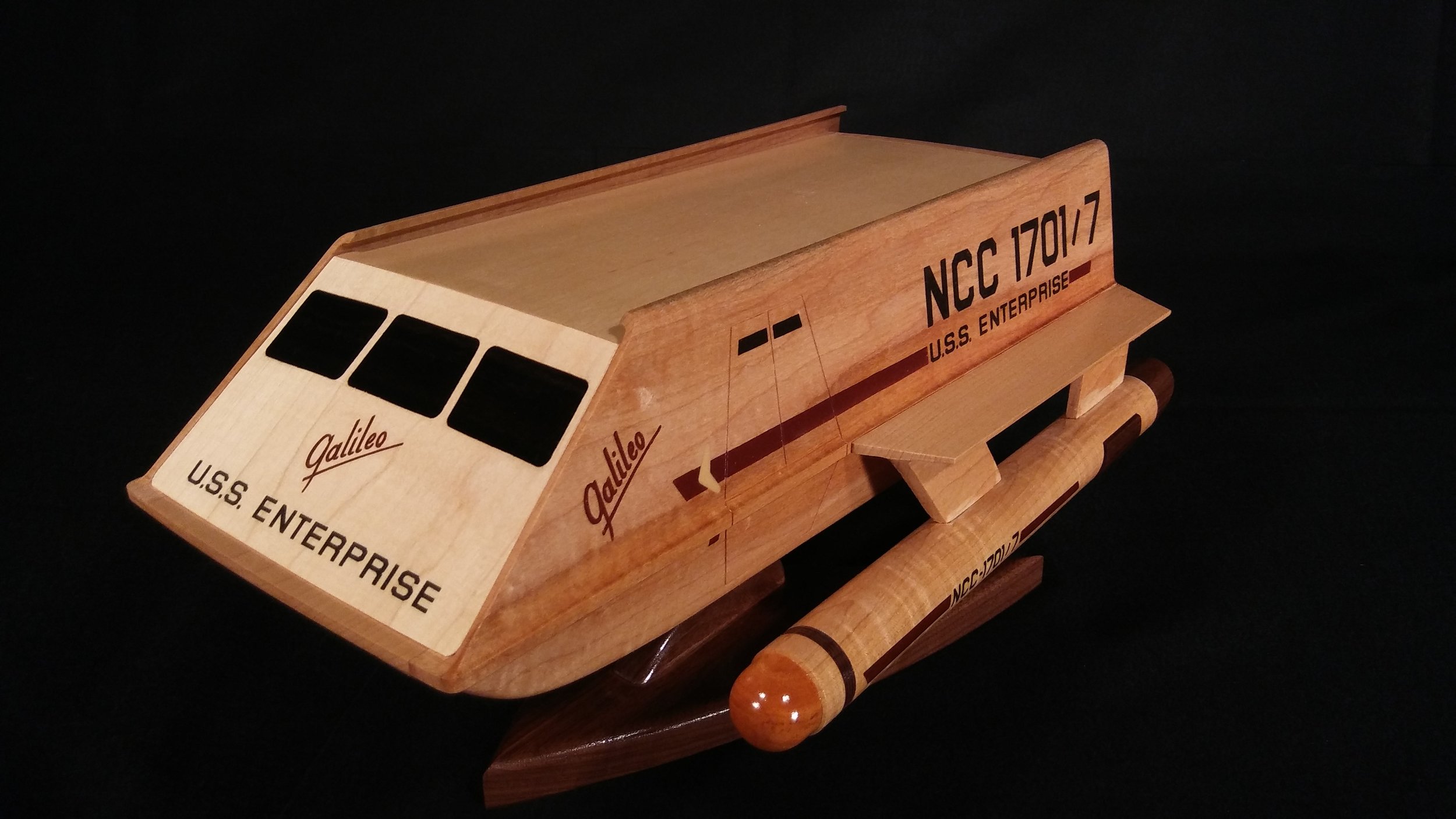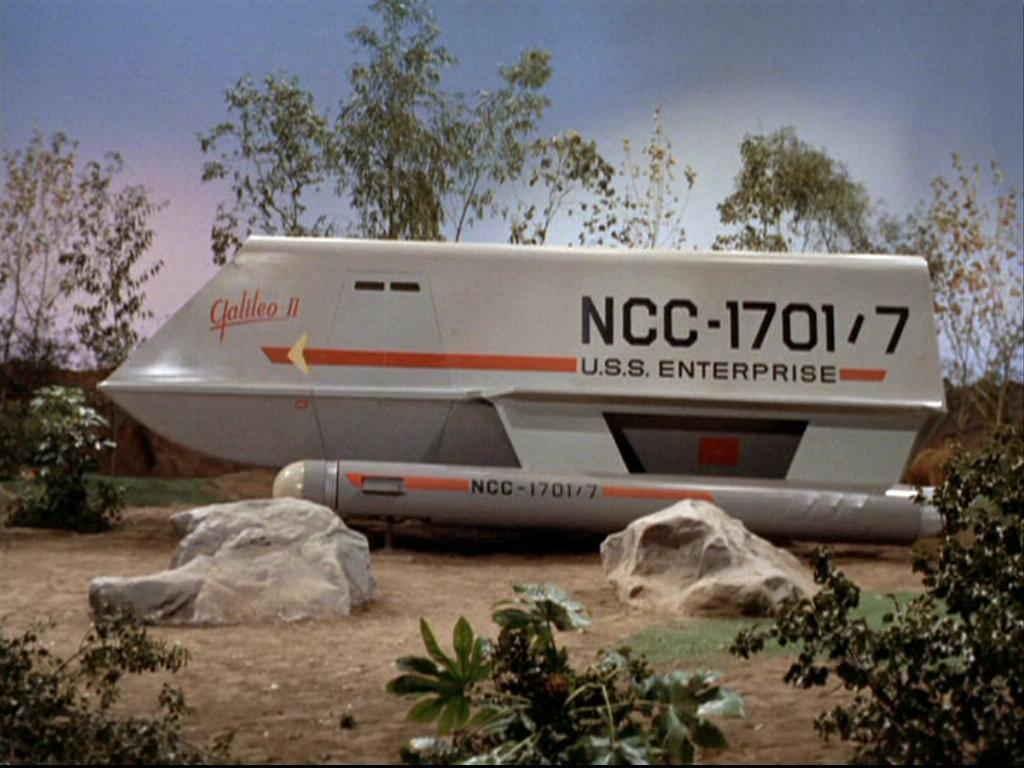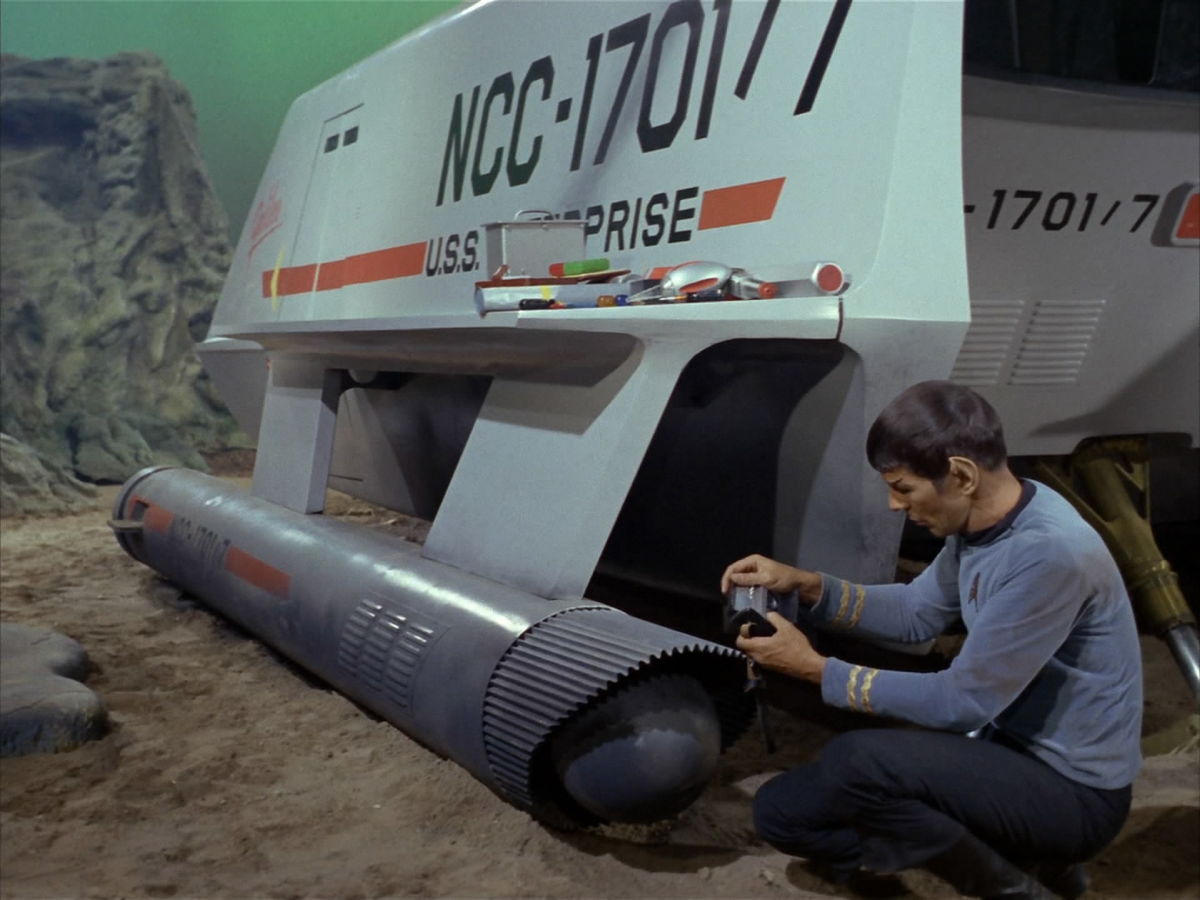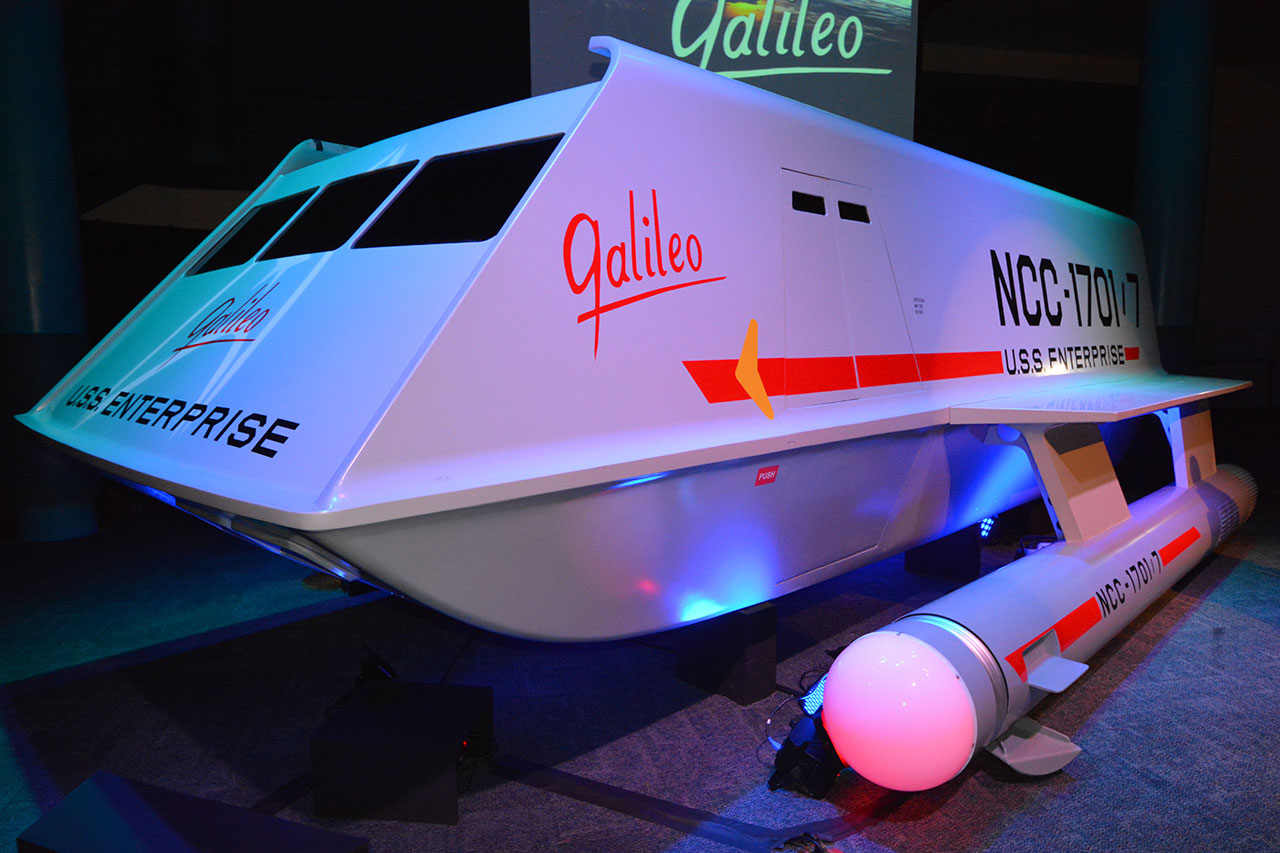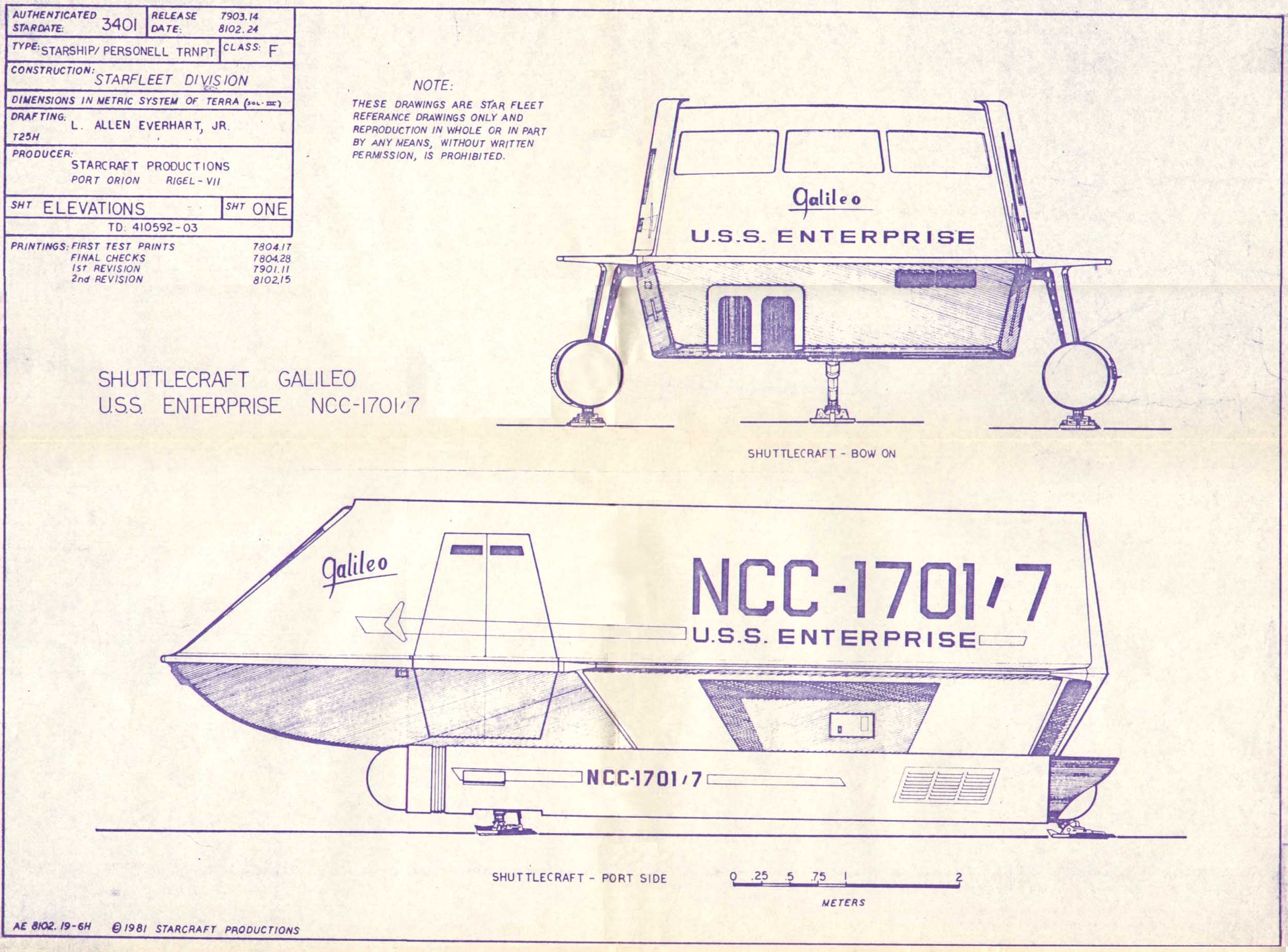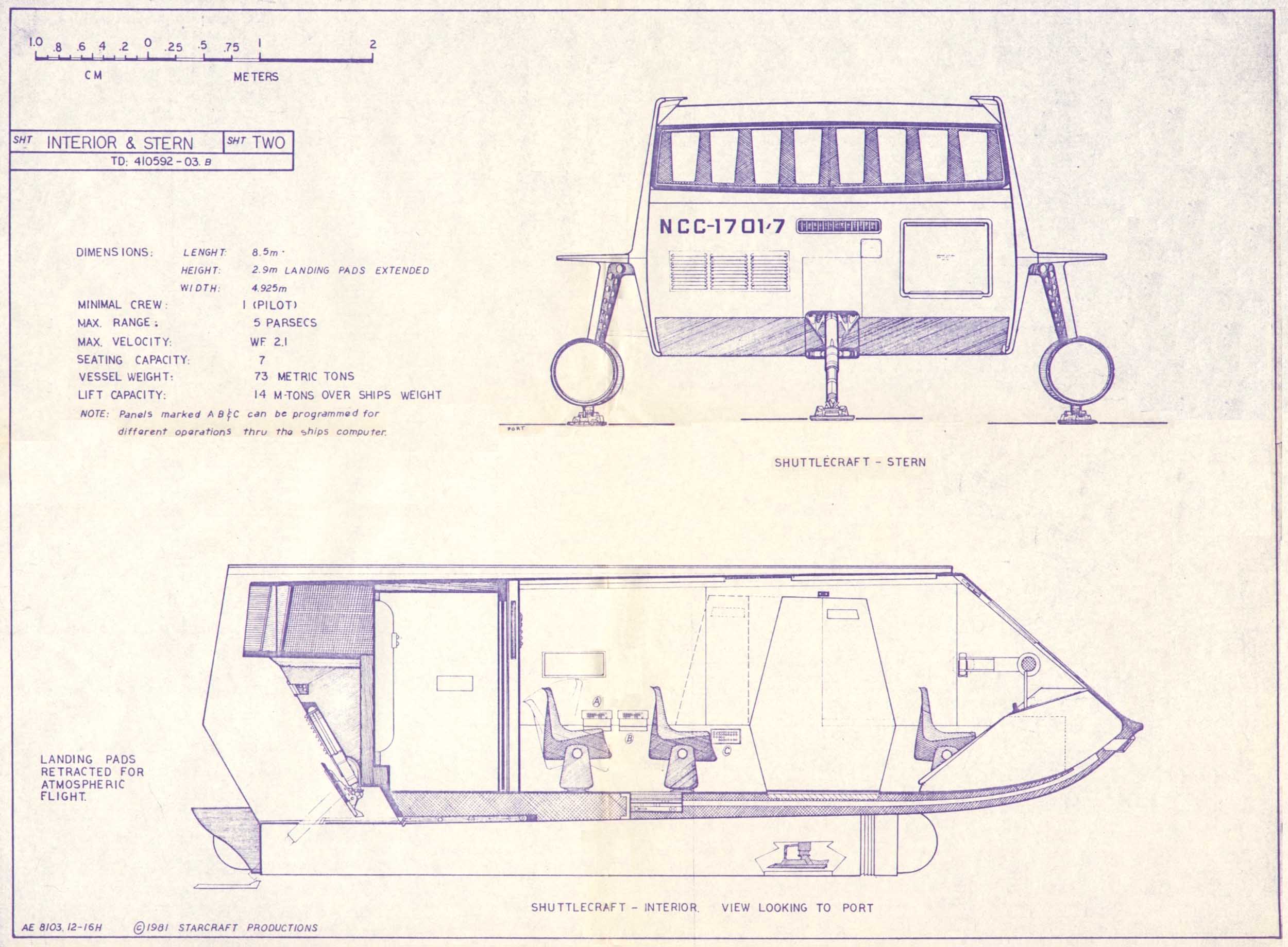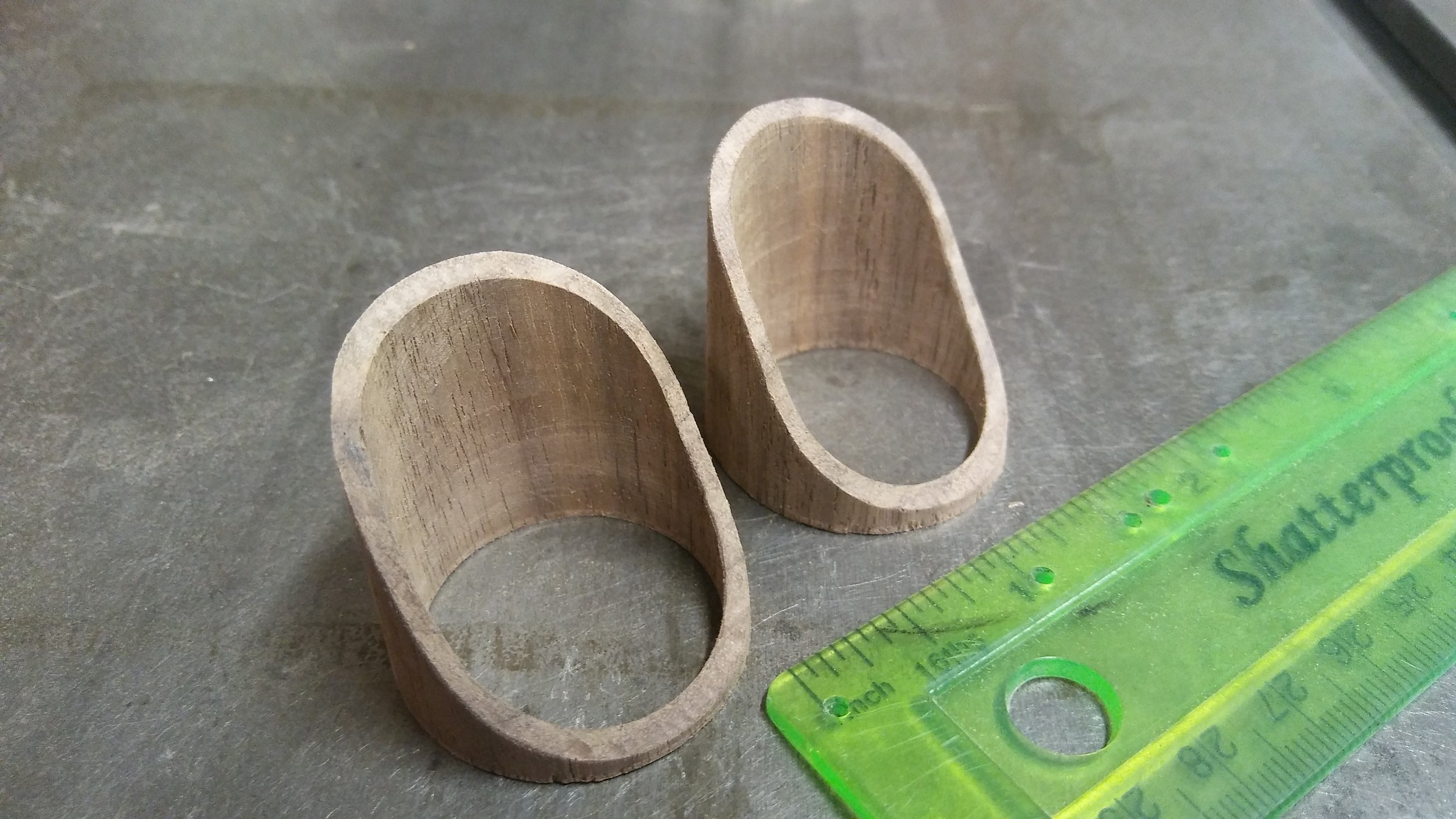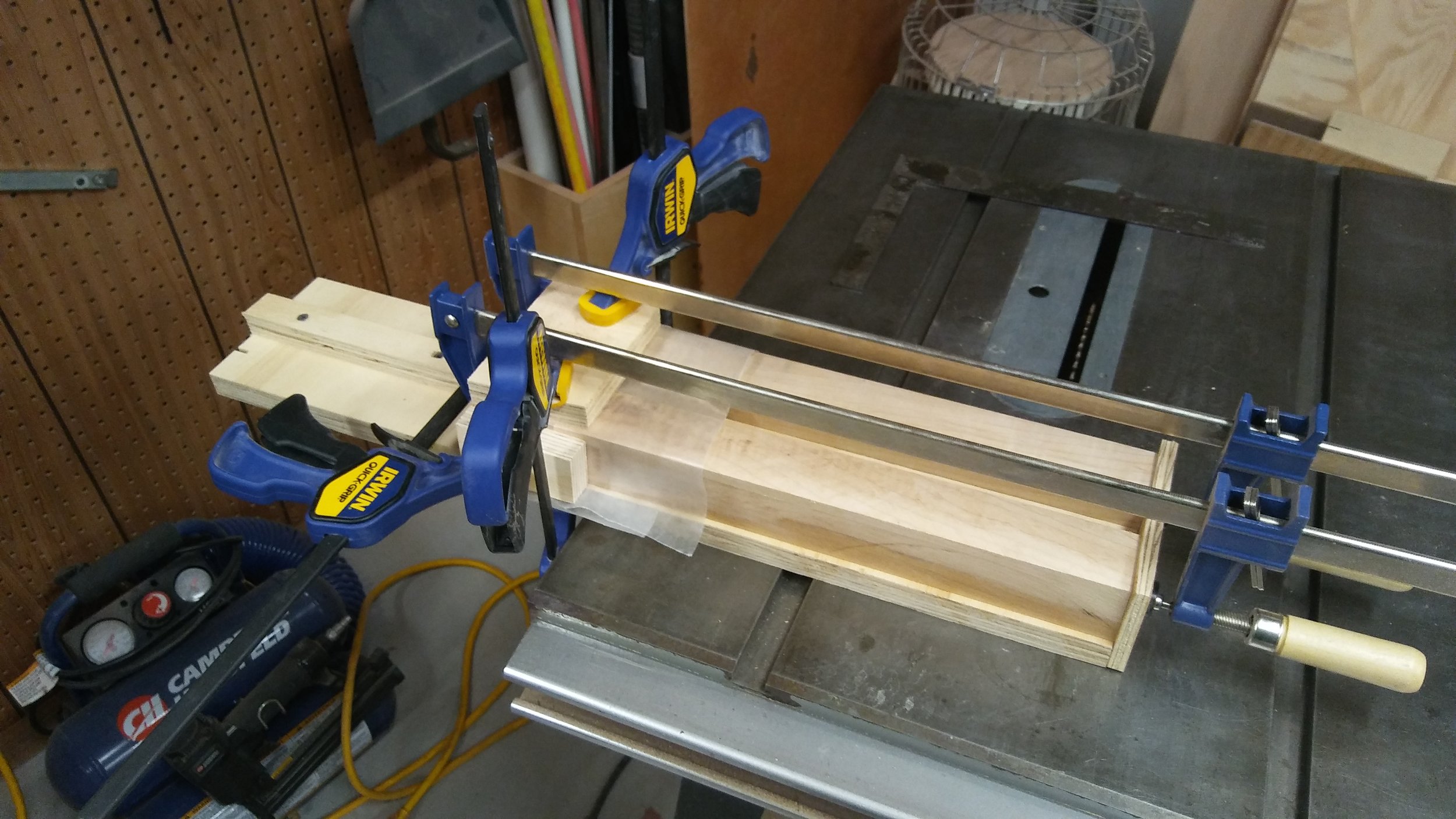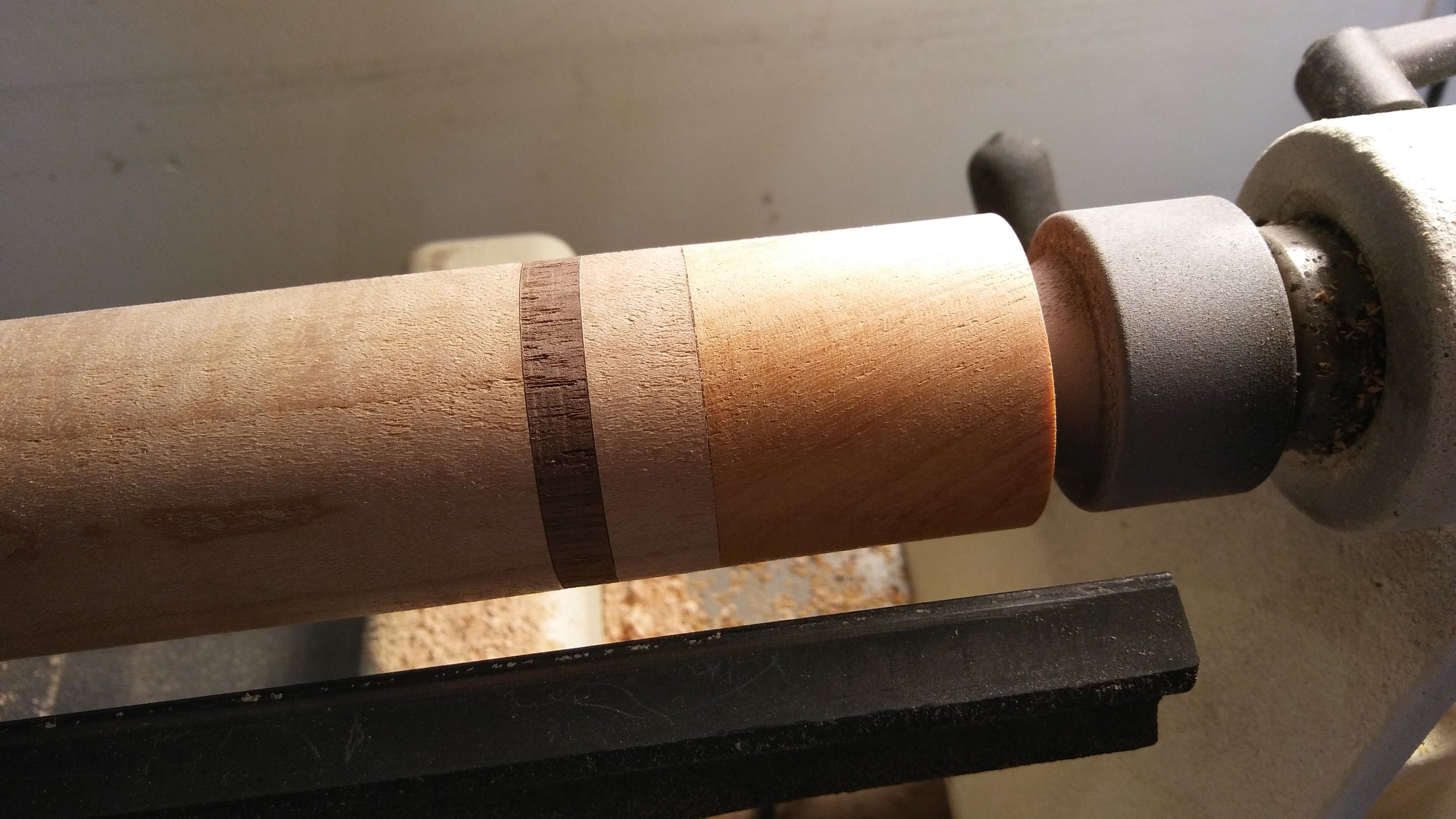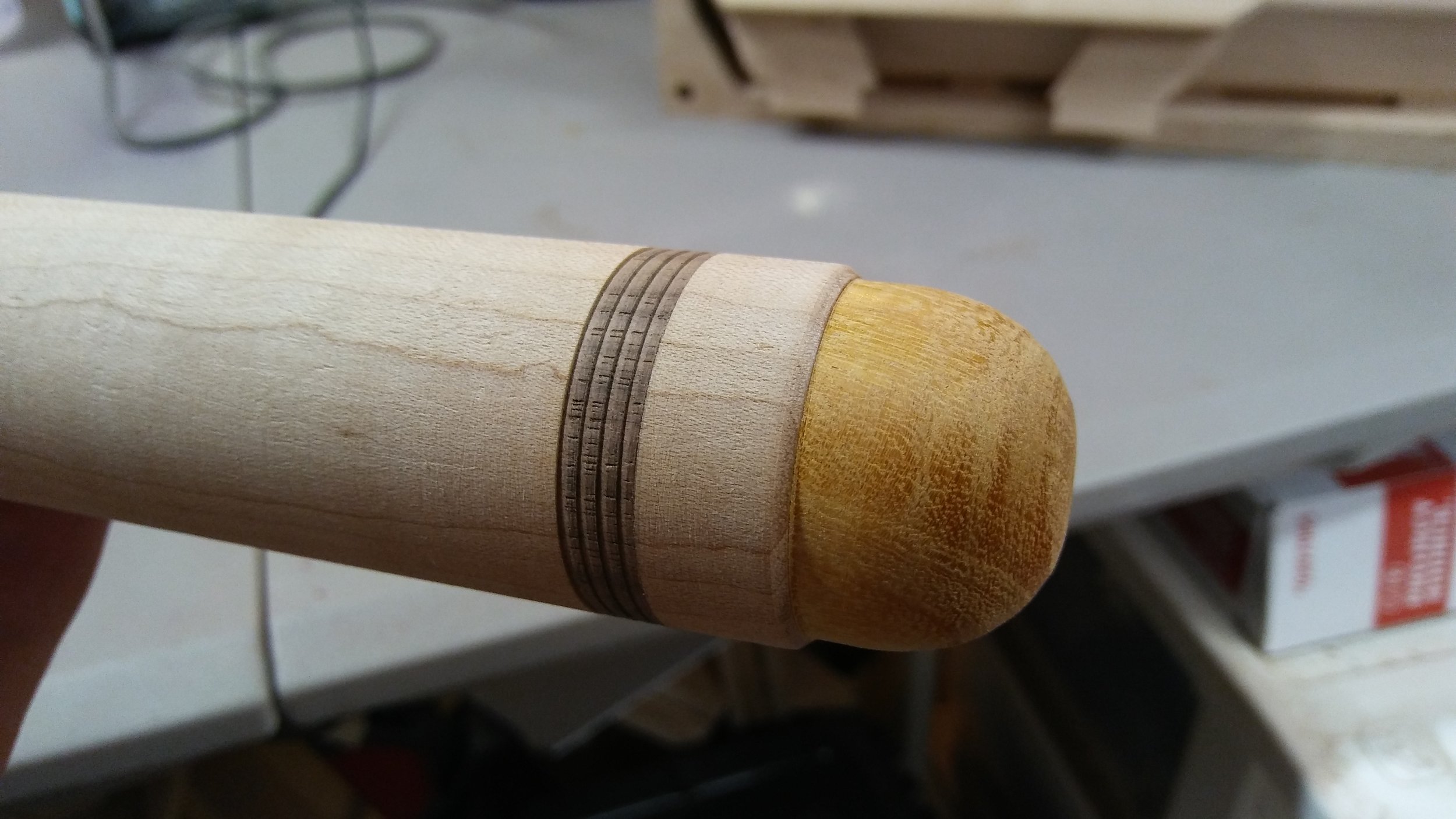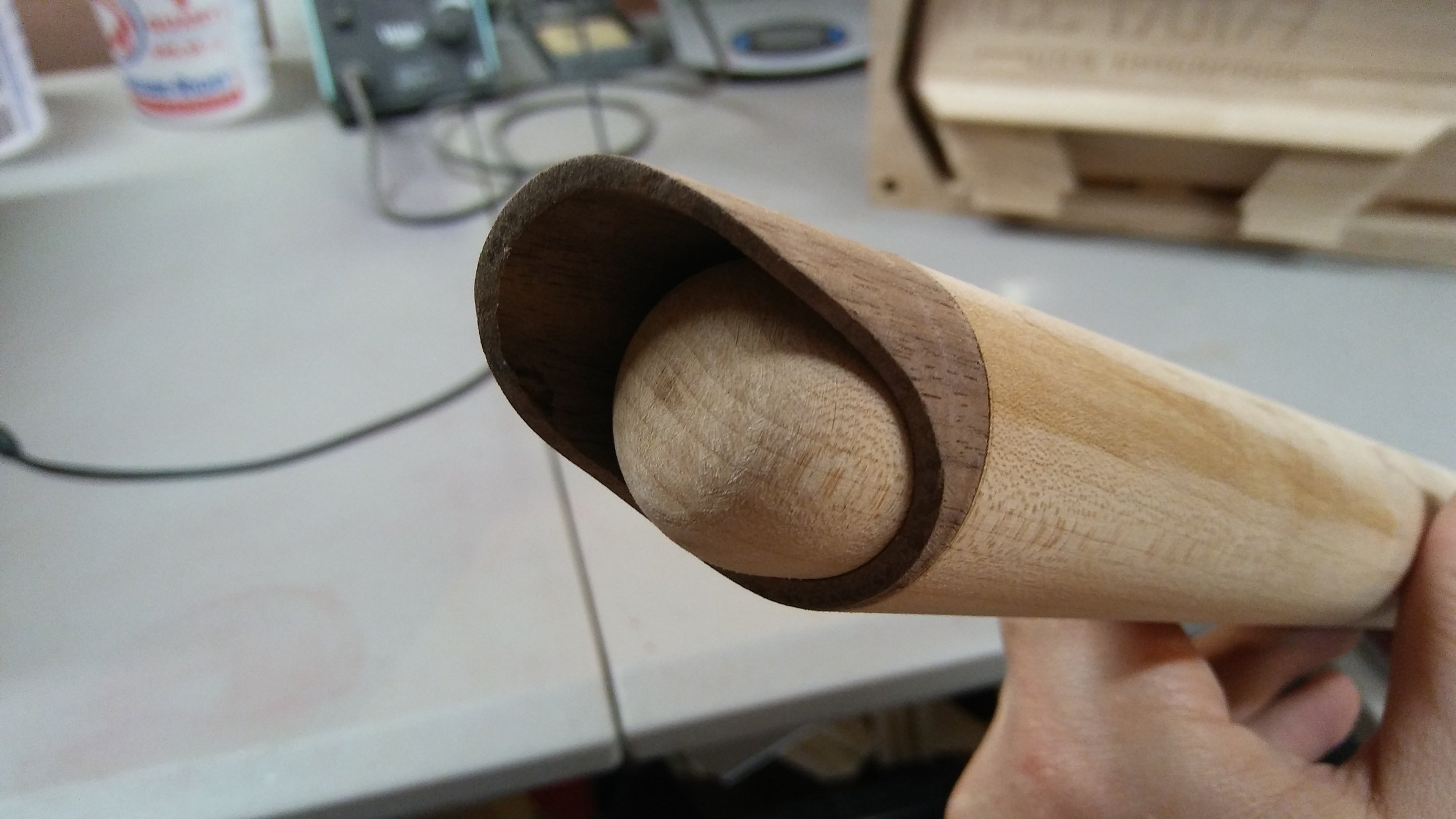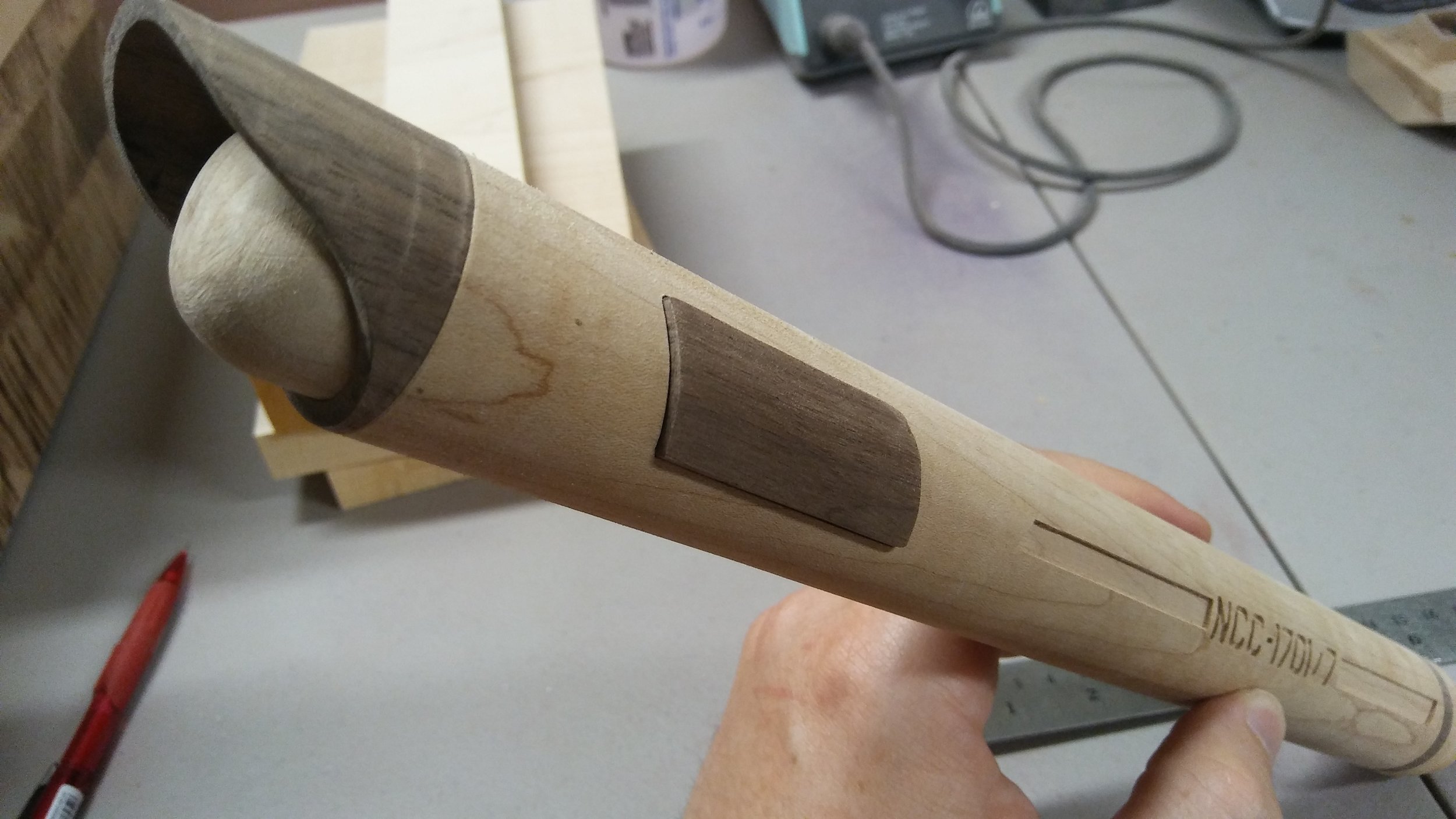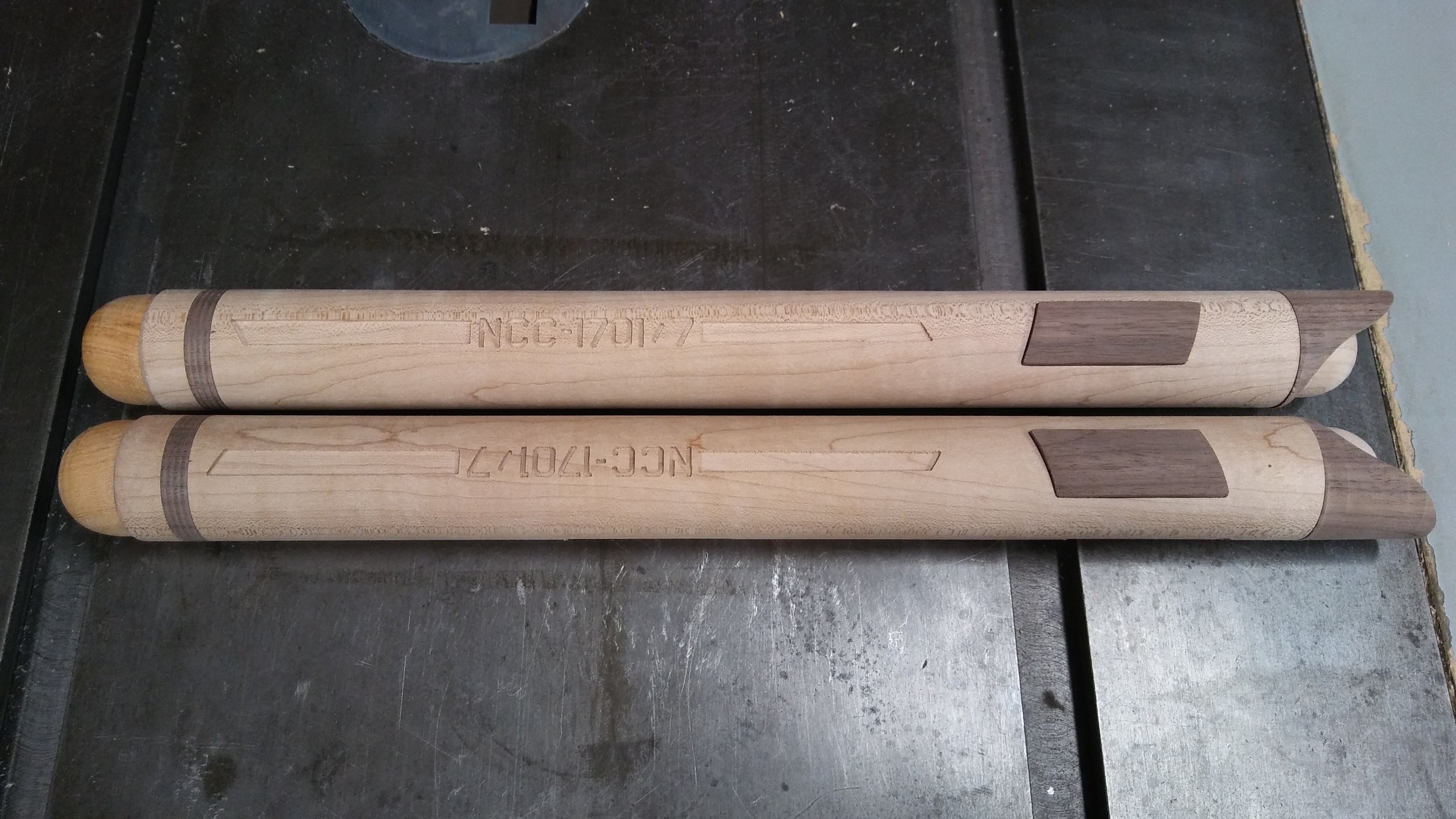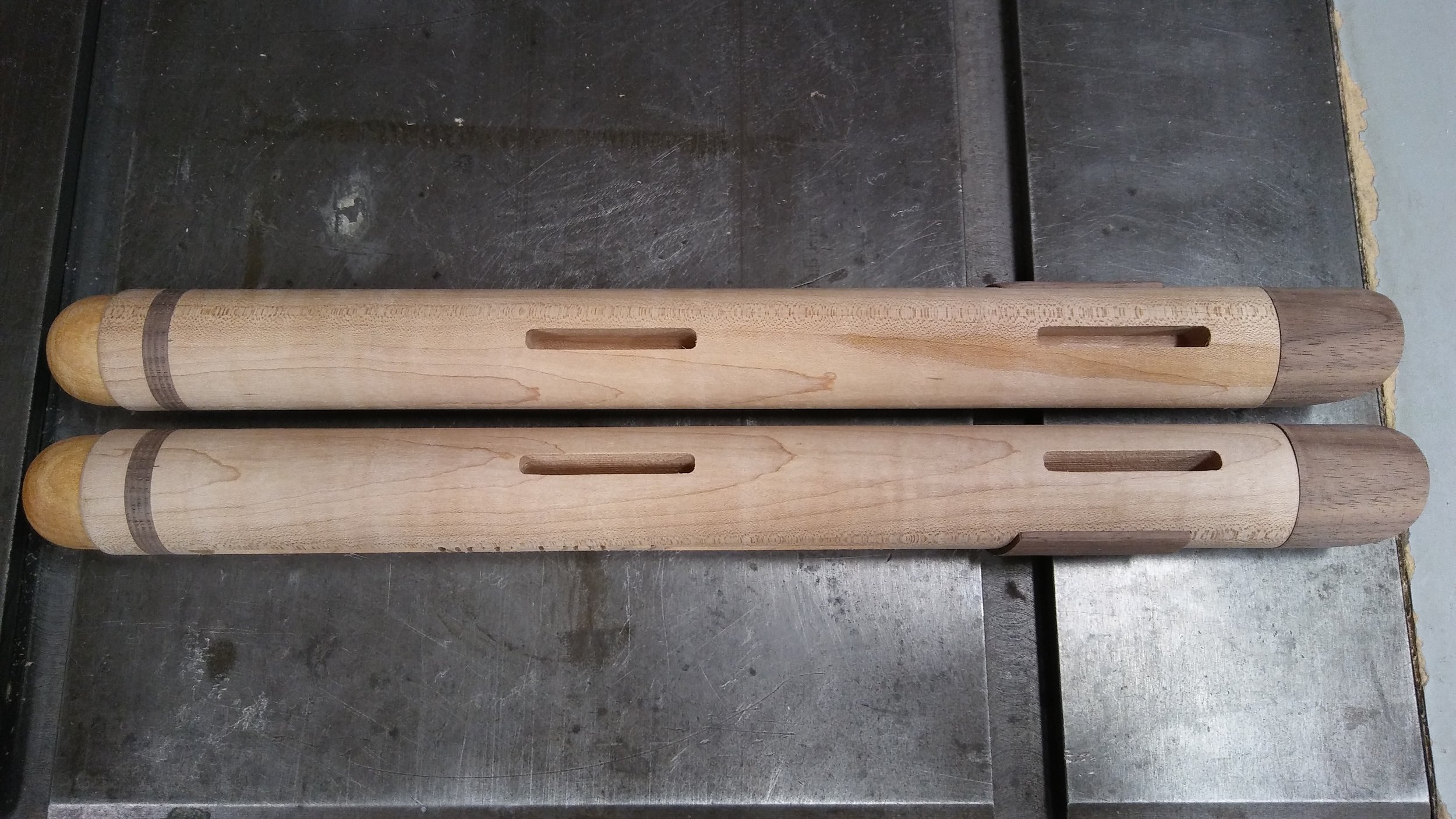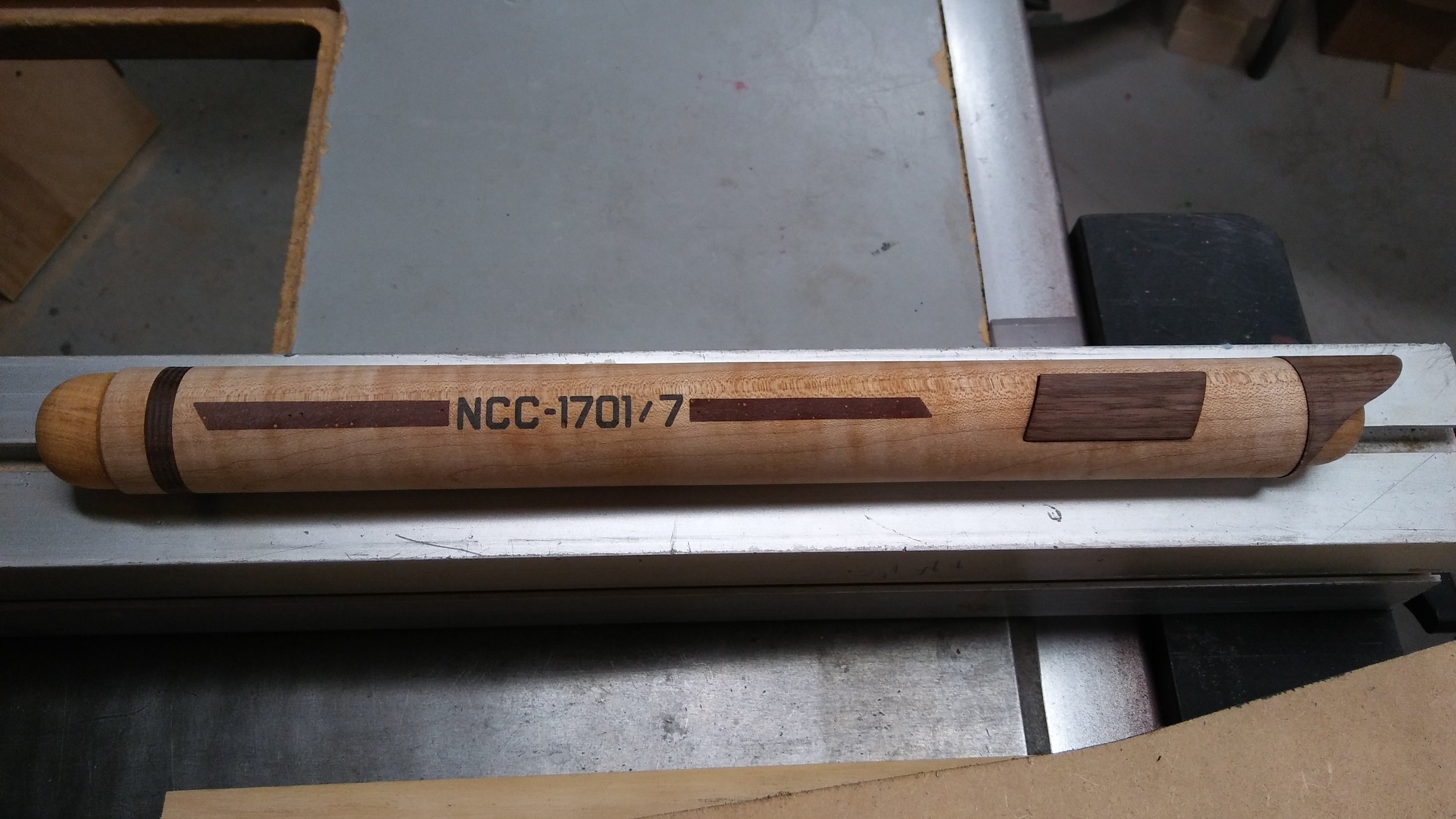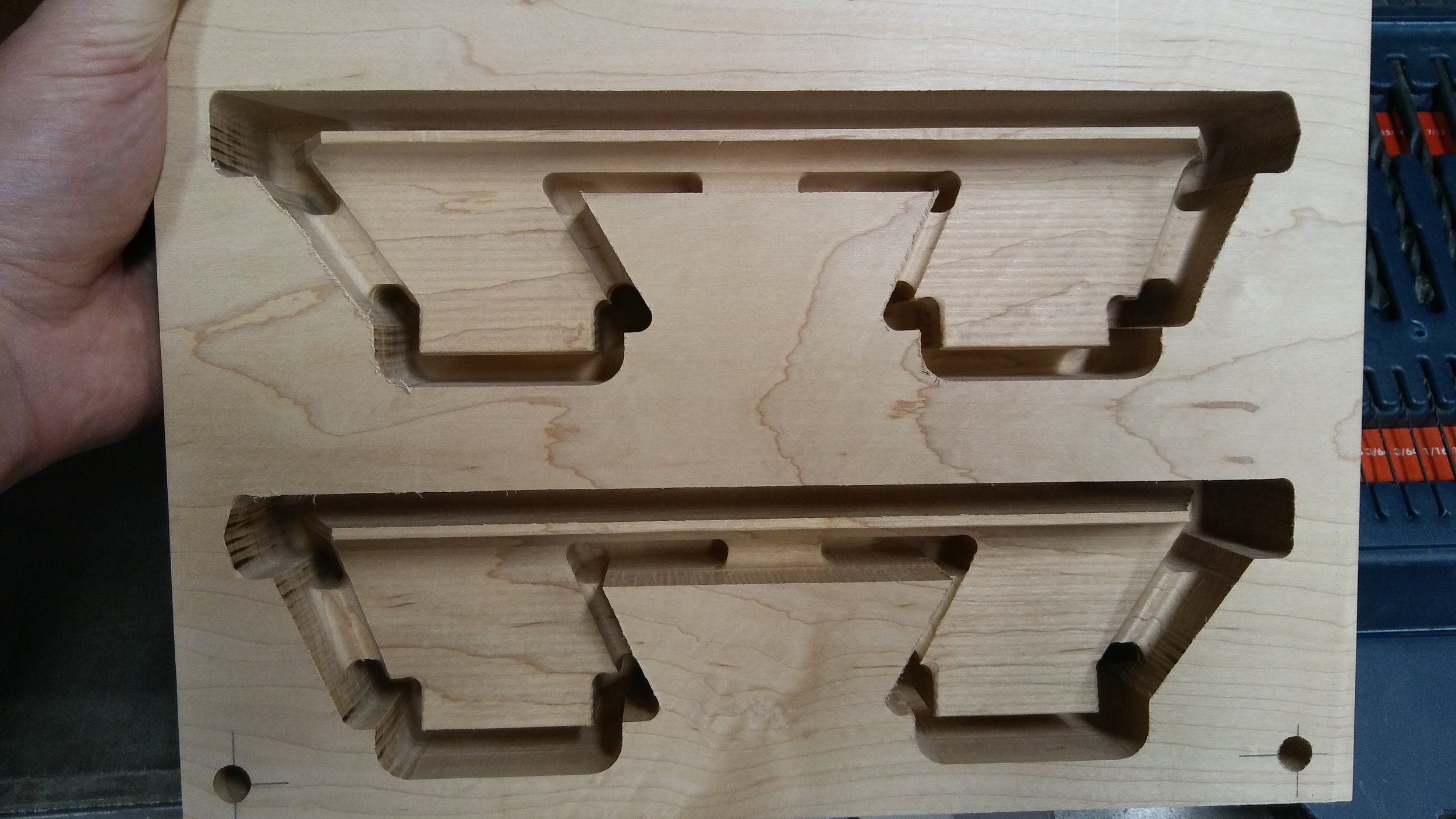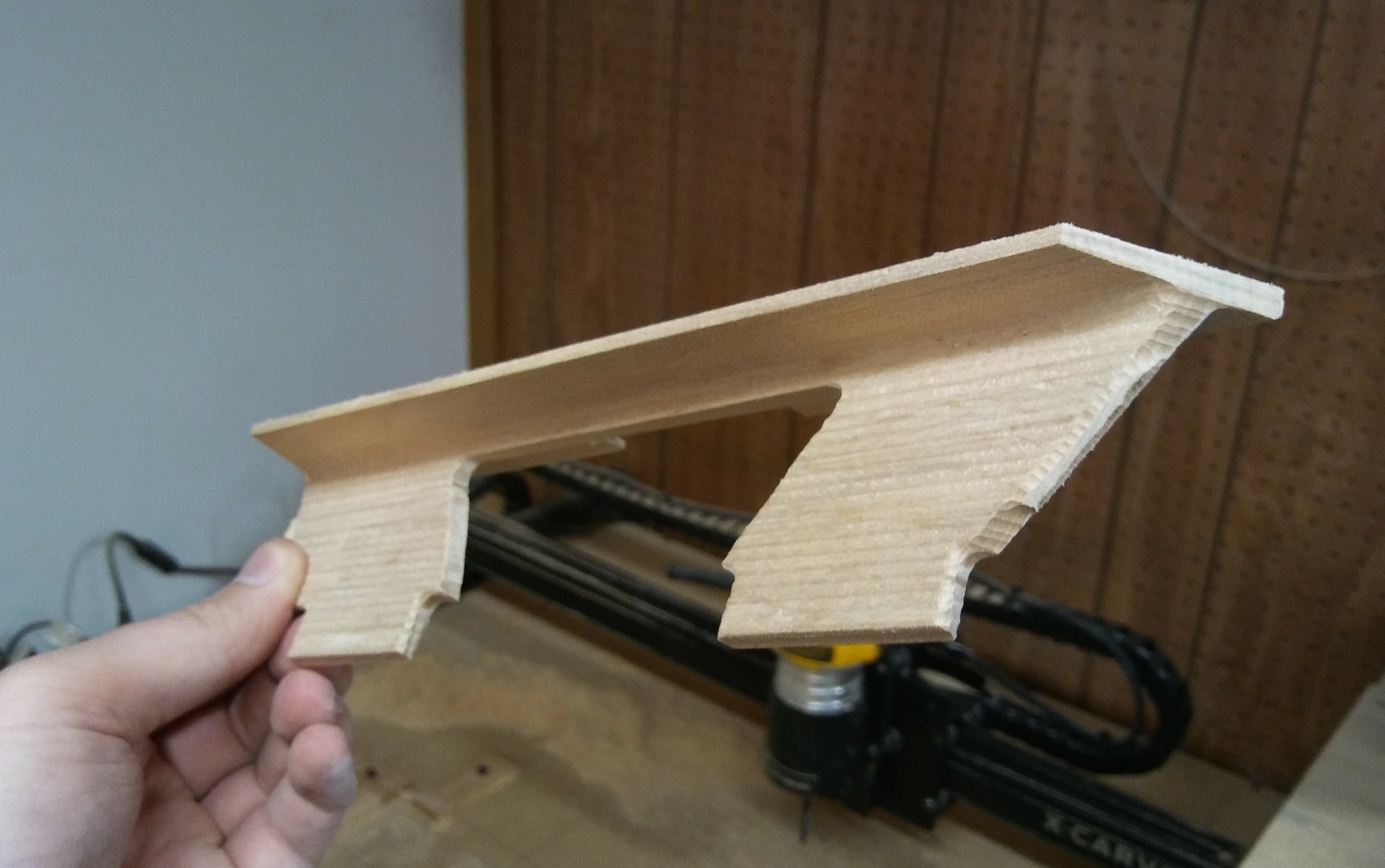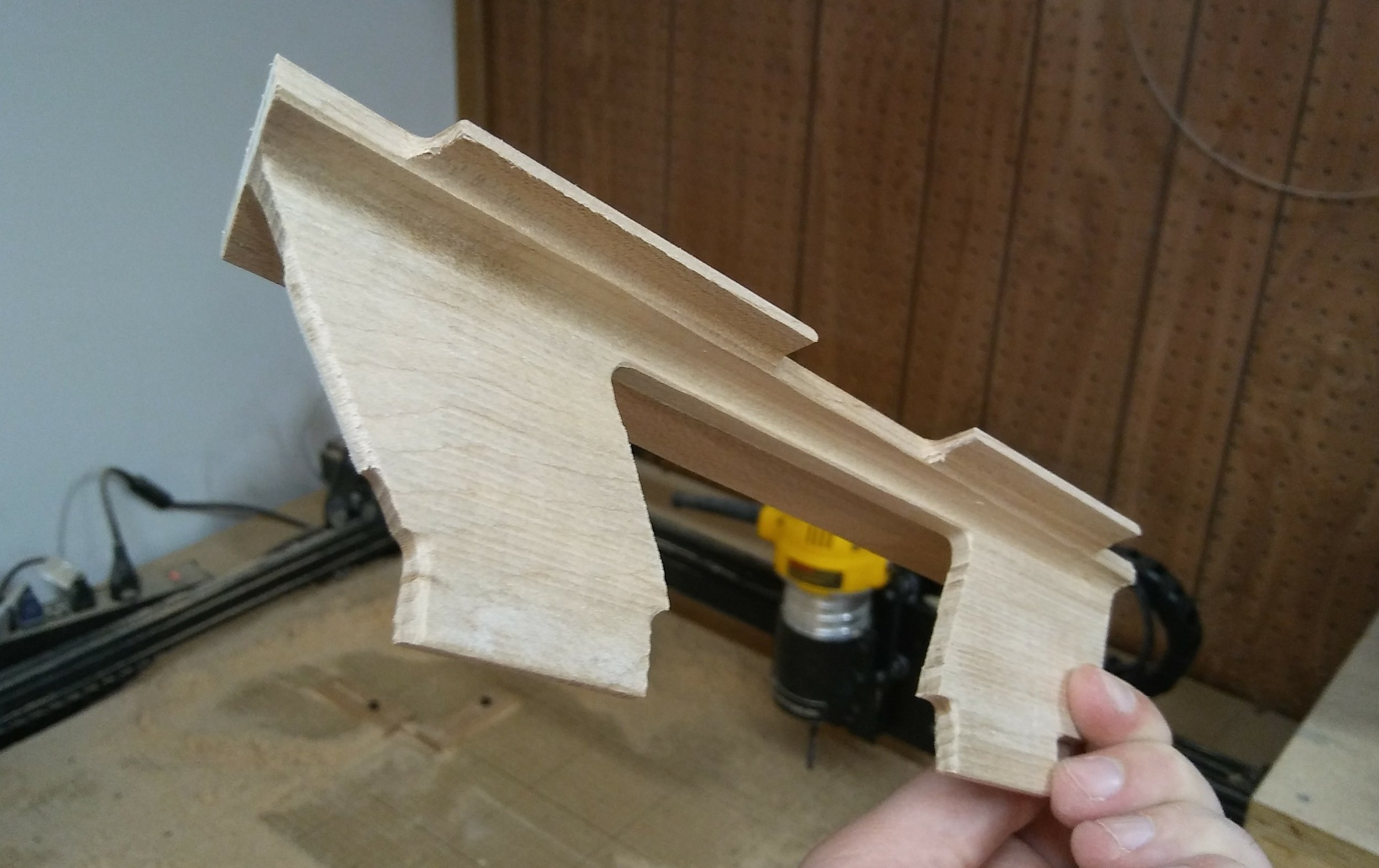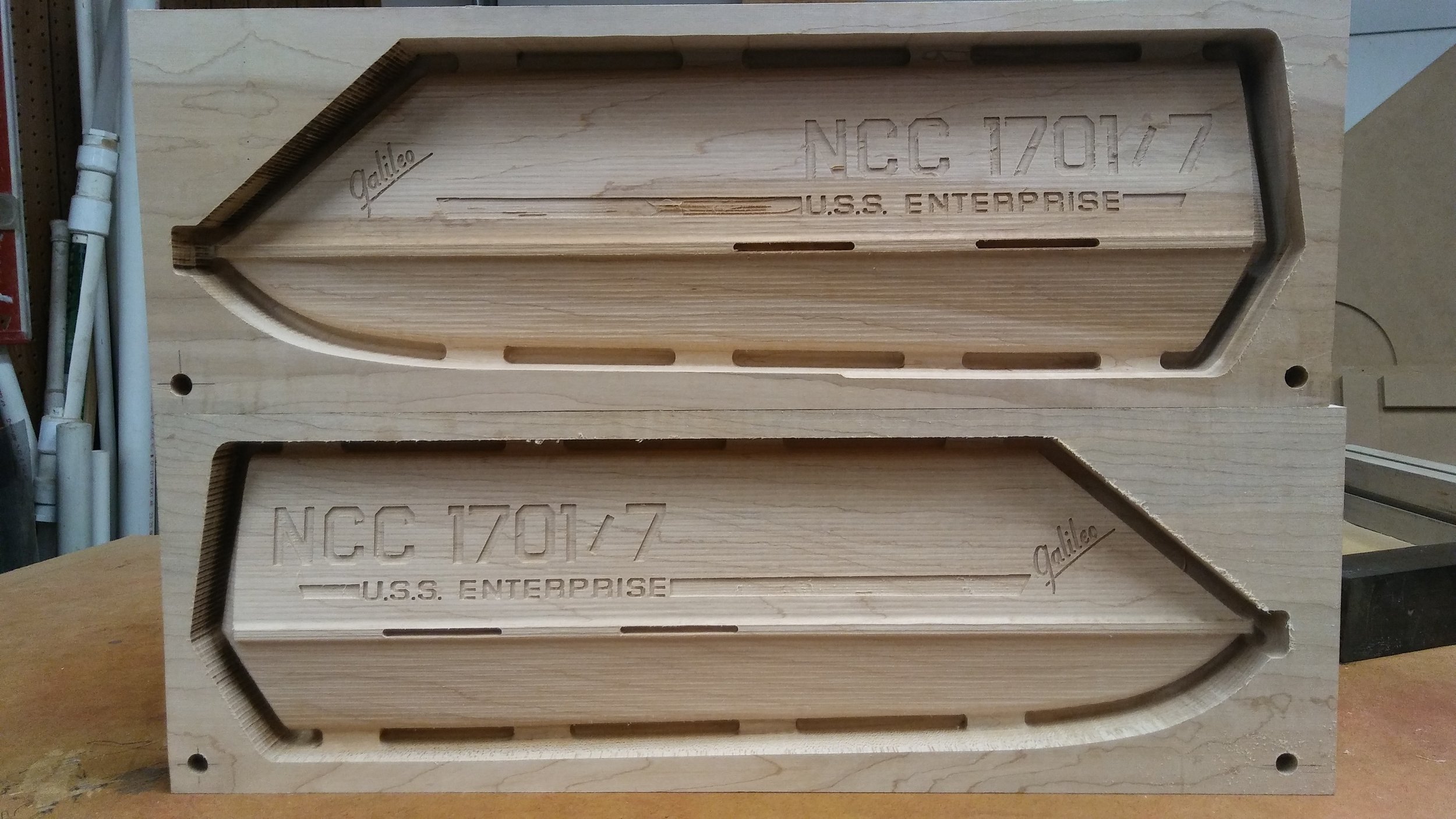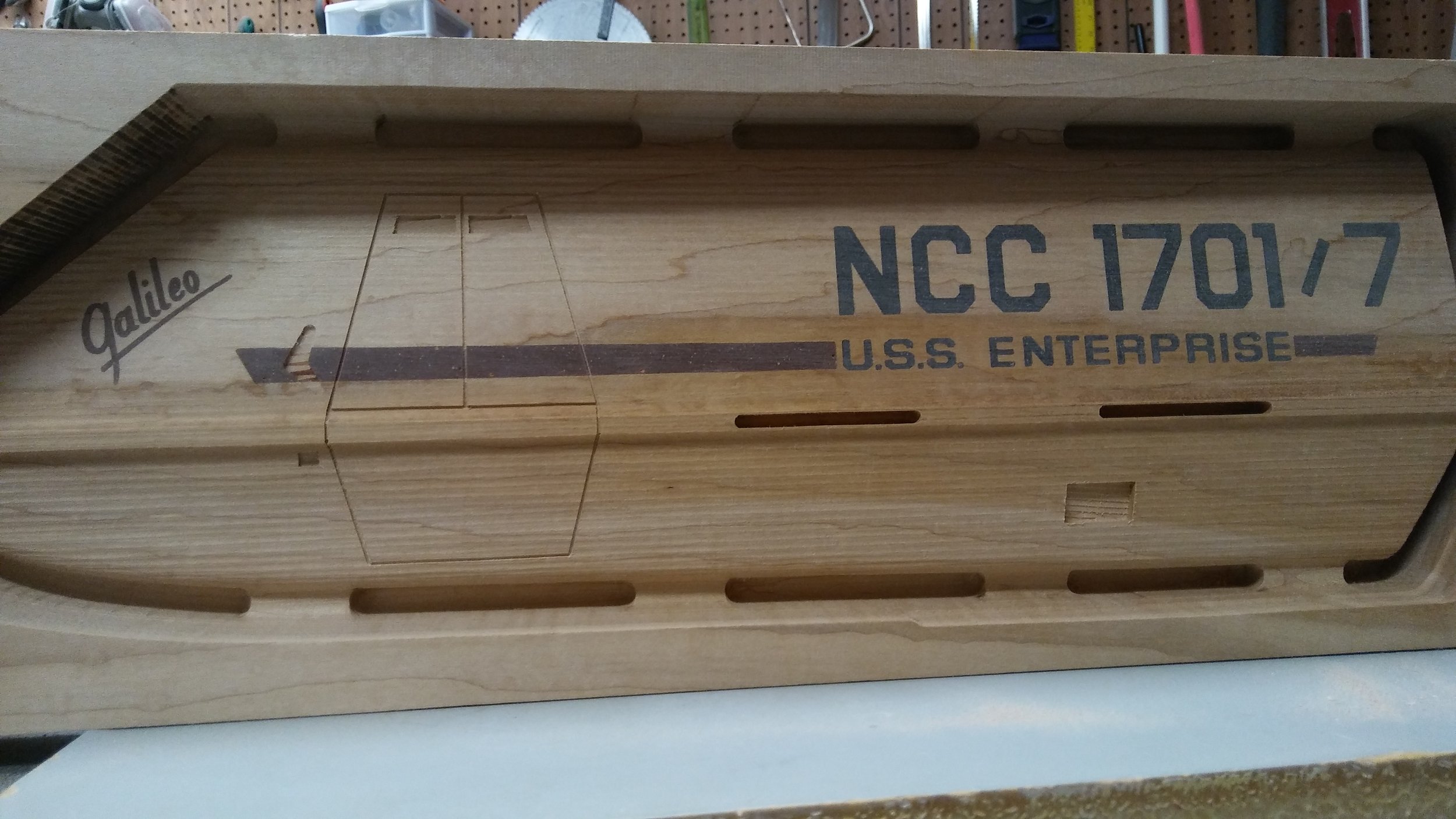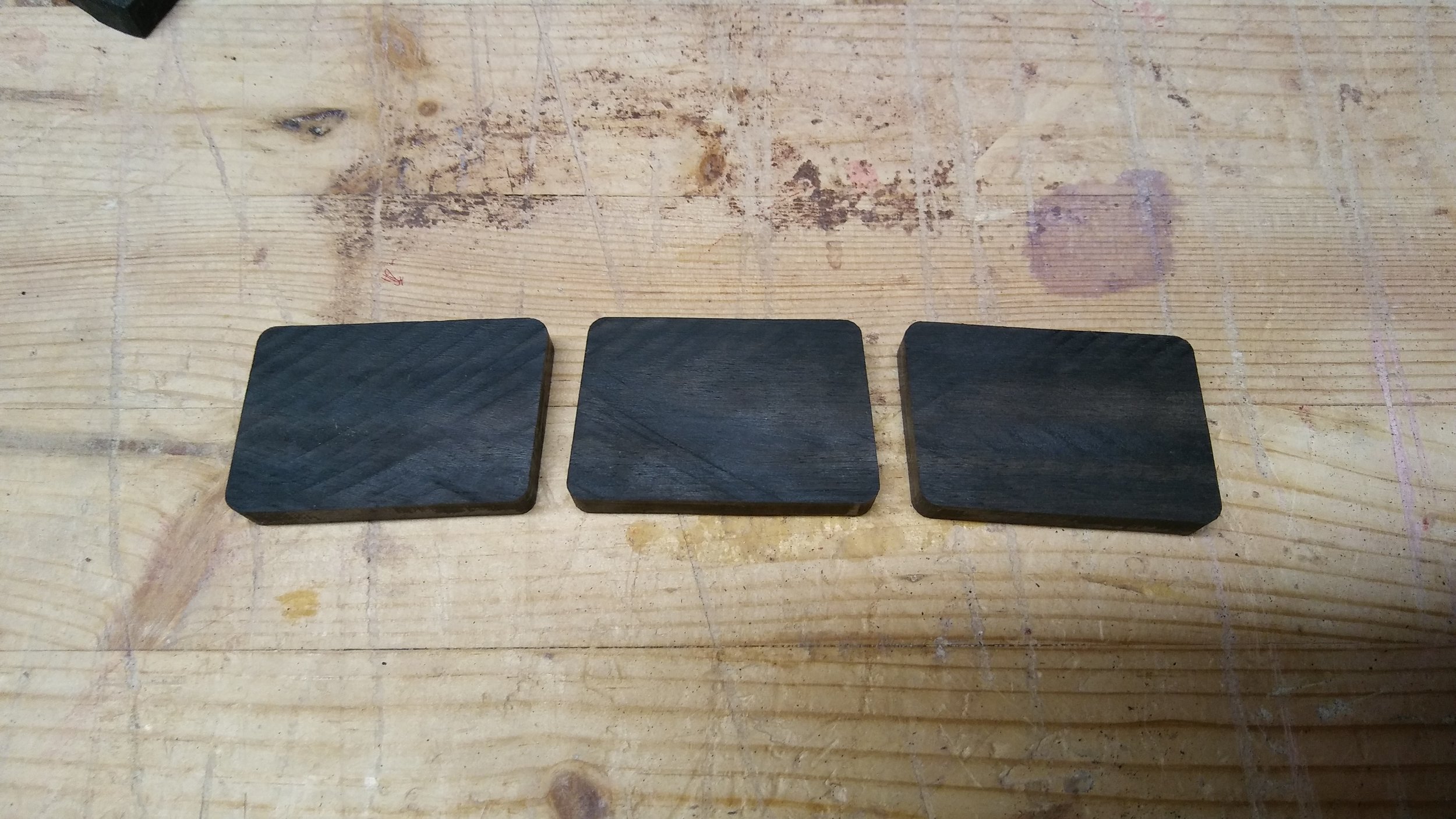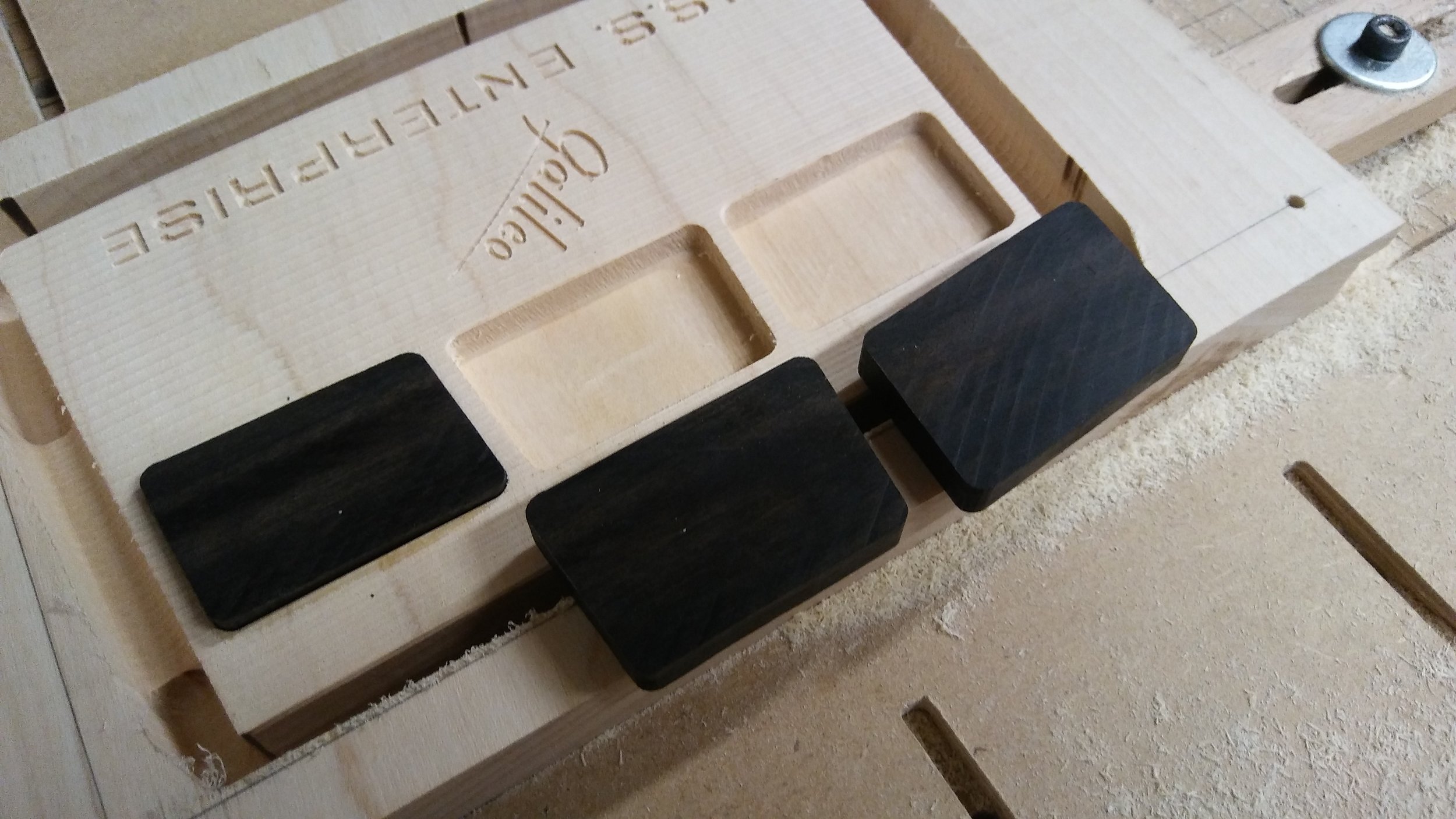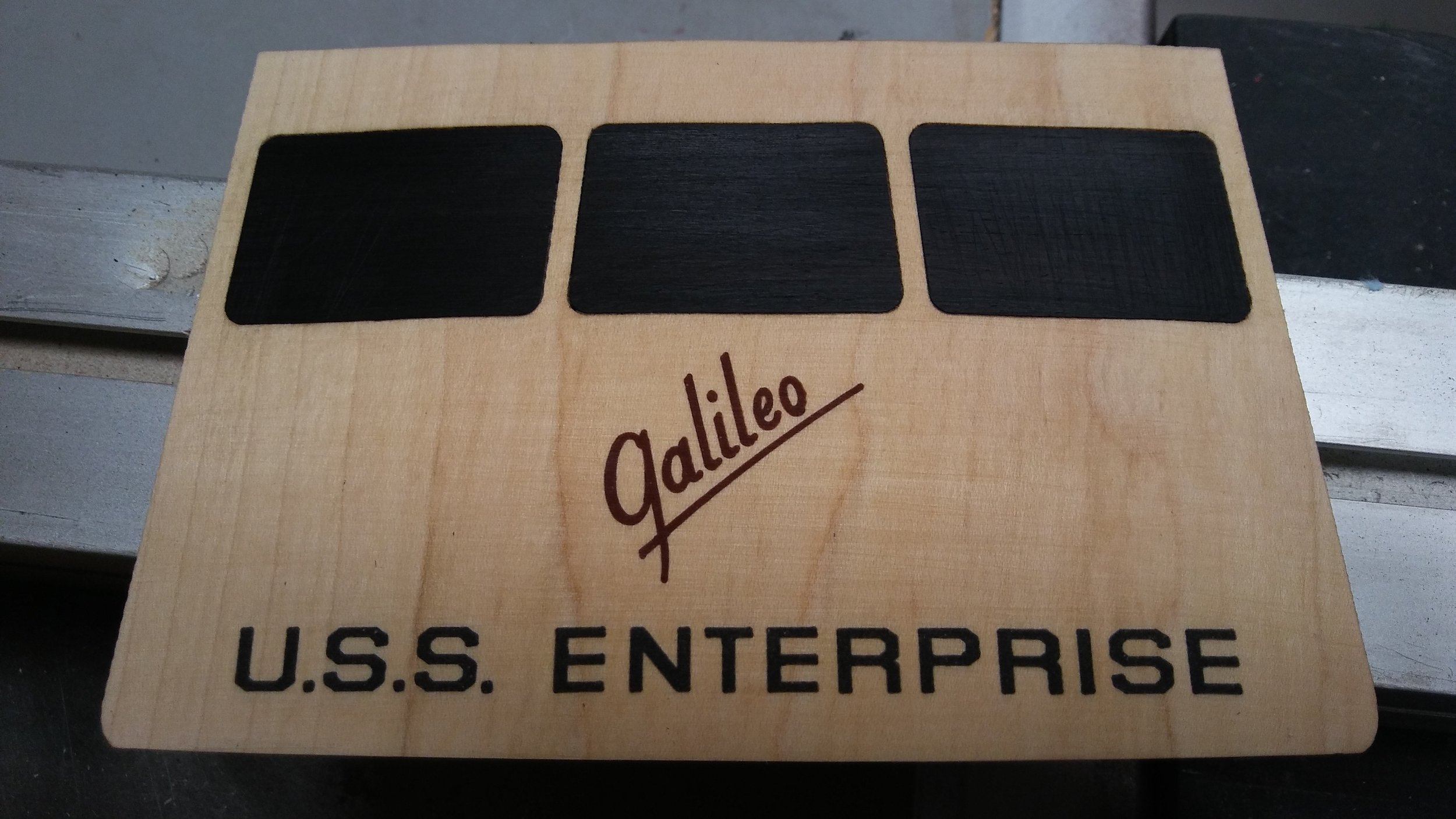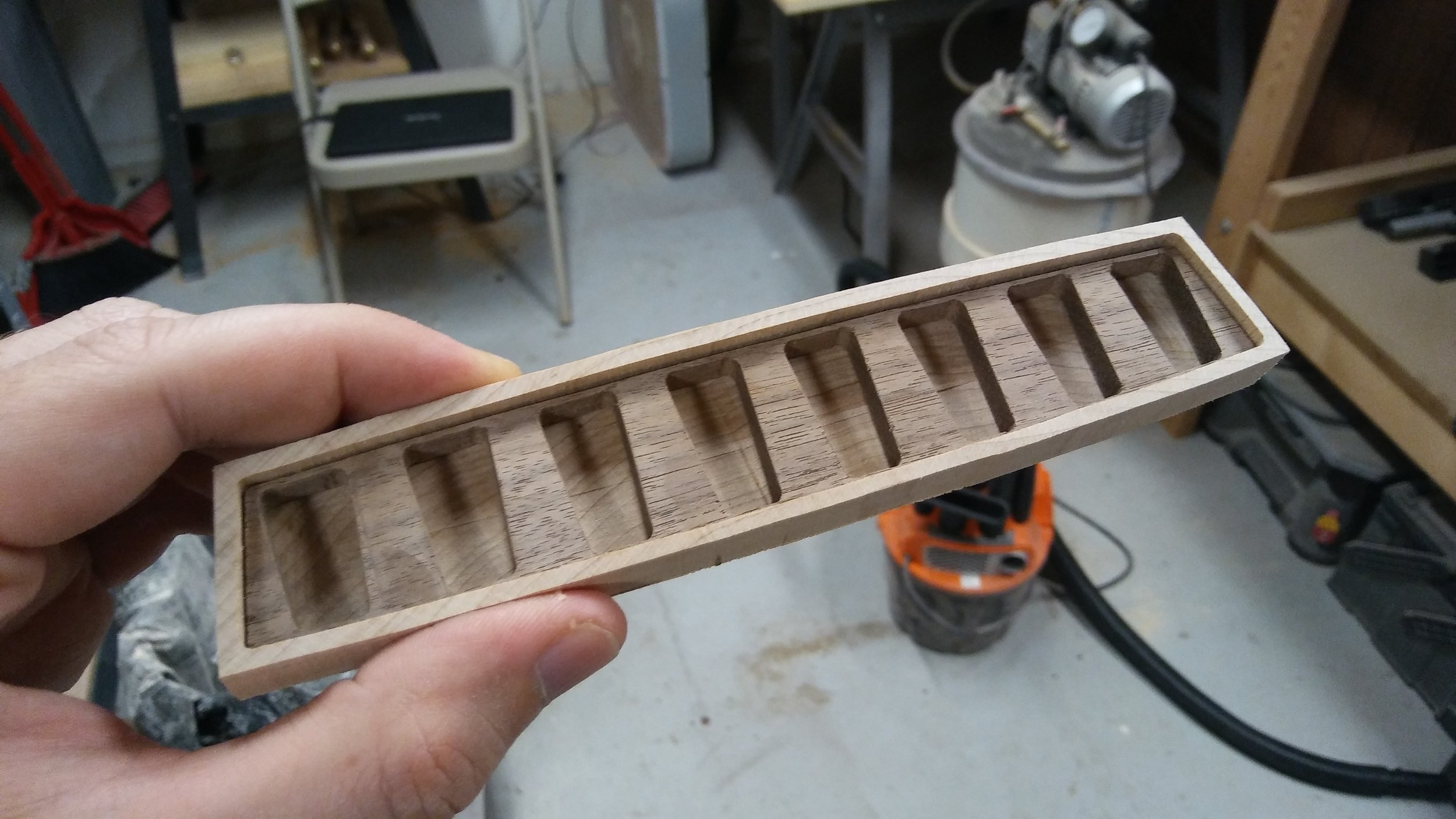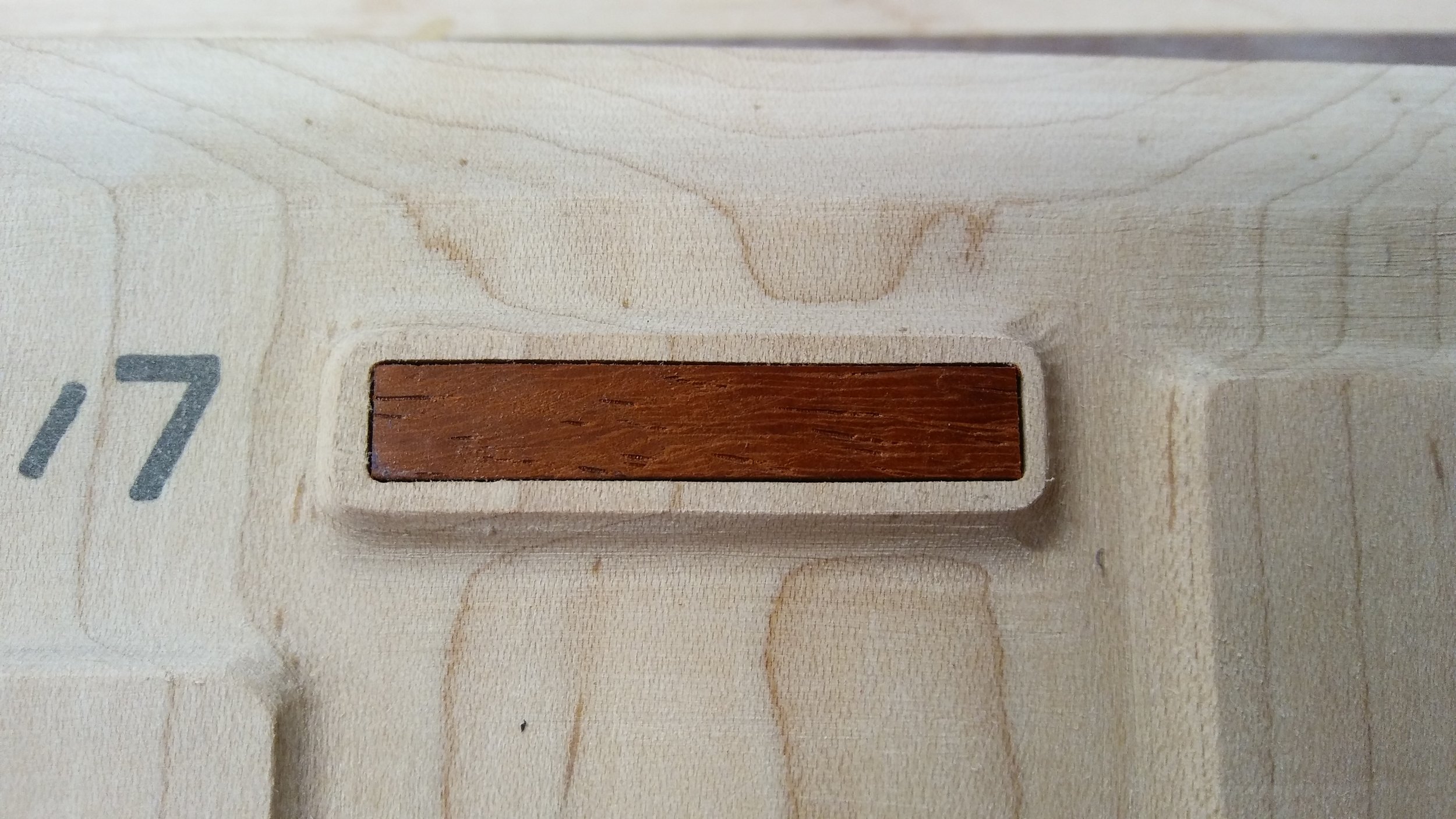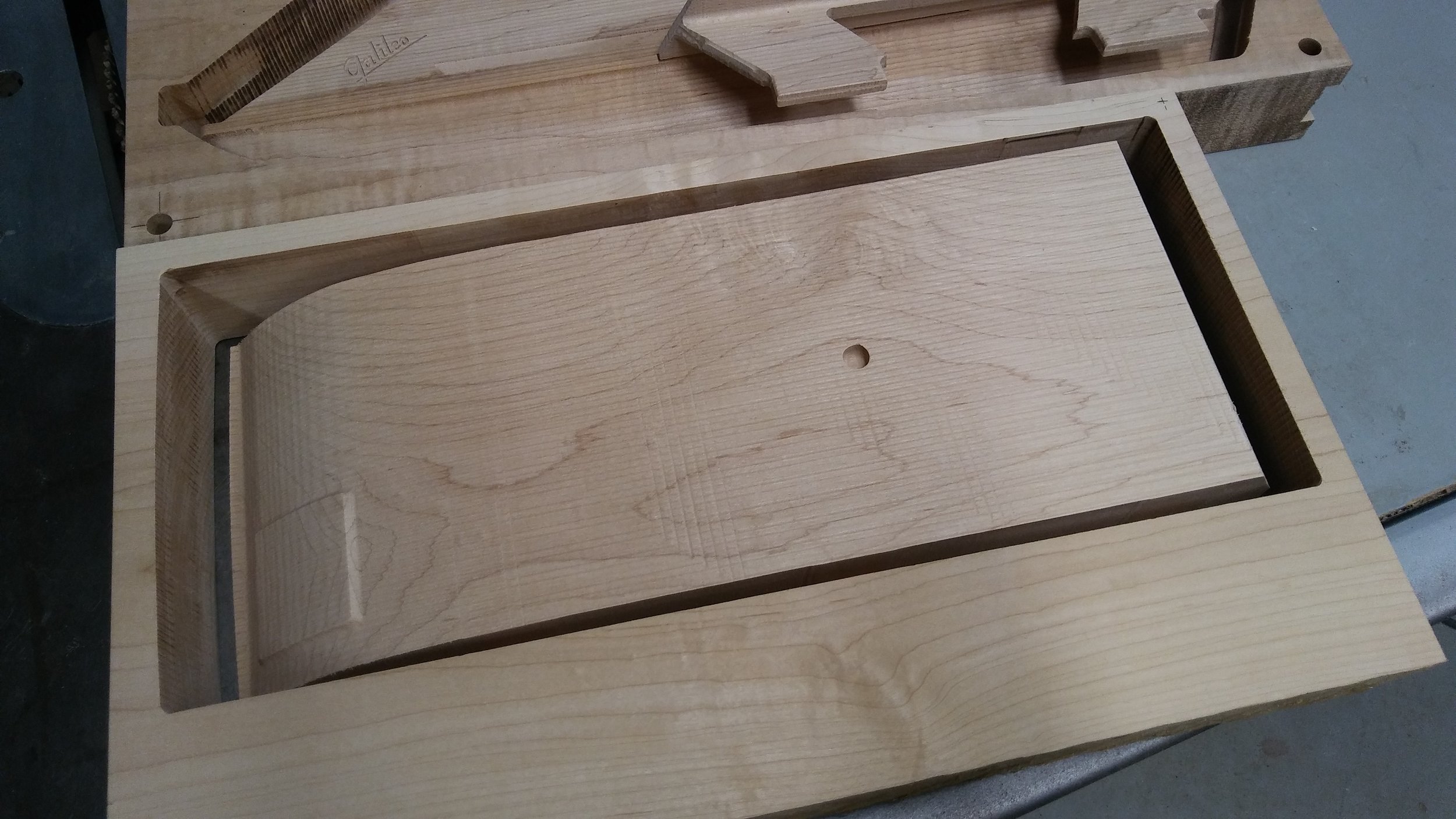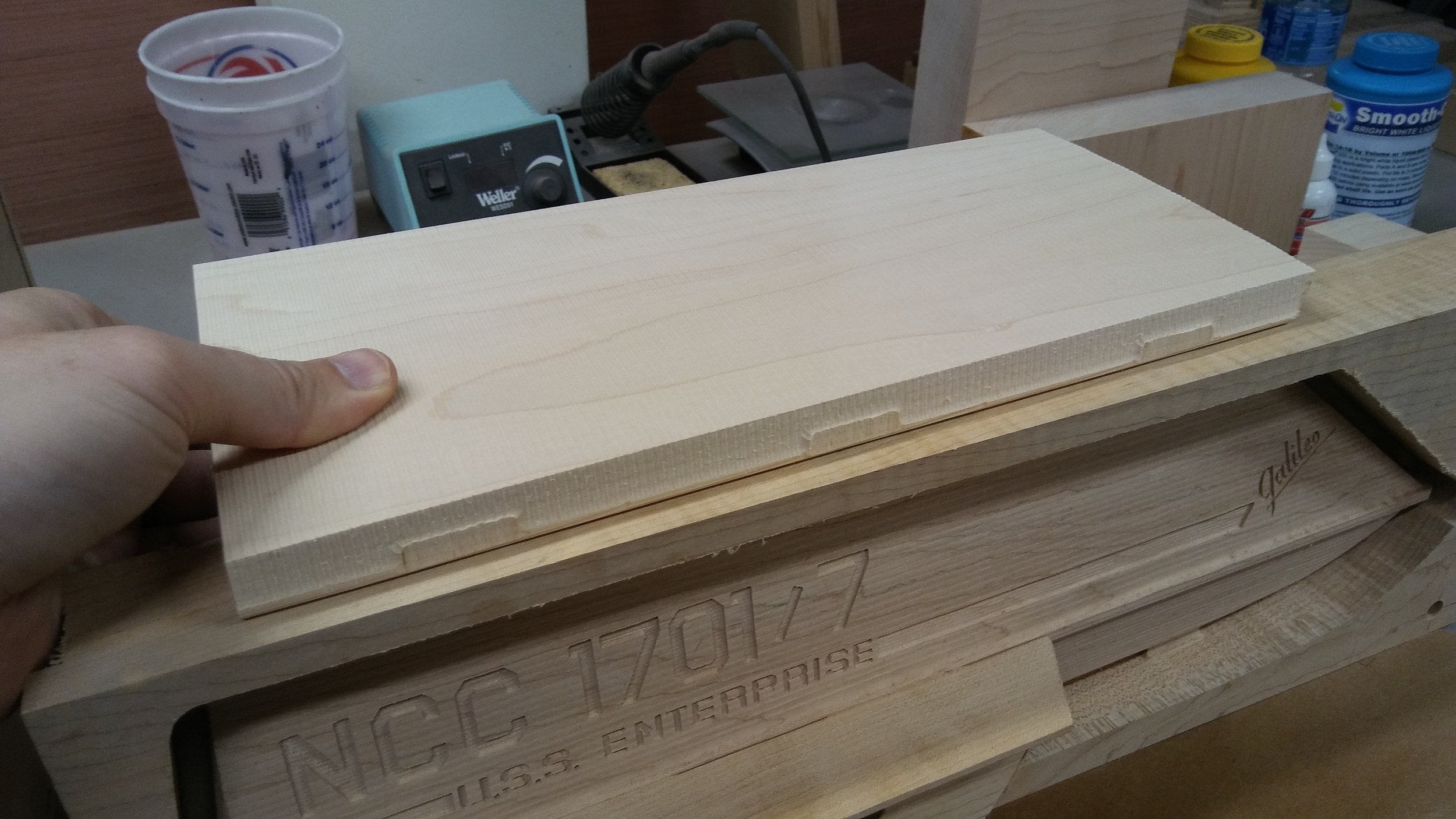This page details the step by step construction of an 18 inch model of the Class F Shuttlecraft Galileo from the original Star Trek series. The theme of this project is to use all natural wood grain with no paint. The colors are accomplished by incorporating different woods of various colors.
The Original Studio Model
Shown below are images of the shuttle from the 1960's TV show and the original full scale studio model, currently displayed at the Space Center Houston in Houston, TX.
Schematics
To create this model, the blueprints created by L. Allen Everhardt, Jr. (Starcraft Productions) were used.
Construction
Most of the components were CNC milled using the X-Carve by Inventables. Several pieces were handmade and the engine nacelles were hand turned on the wood lathe. The inscriptions were routed out using the X-Carve and filled with an epoxy and sawdust mixture, to emulate the actual colors of the parent woods.
Engine Nacelles
The engine nacelles were made from segmented blocks using hard maple, black walnut, and osage orange. The are slotted to fit onto the pylons, shown in the next section. The inscriptions was filled with epoxy and ebony and padauk sawdust. The cowls and side grills were made of black walnut. Pictured with the side grill pieces are two smaller pieces that are mounted to the underside of the front.
Engine Pylons
The engine pylons were made from 11.5" x 3.8" x 1.9" blocks of hard maple. The tabs fit into the slots on the engine nacelles shown above.
Sides
The sides were made from 19.3" x 6.5" x 1.8" blocks of hard maple. The inscriptions were filled with epoxy and ebony, padauk, and yellowheart sawdust. Slots were cut into the sides into which the tabs from the engine pylons would later be mounted.
Front
The front was made from a 5.75" x 8.2" x 1" block of hard maple. The inscriptions were filled with epoxy and ebony and padauk sawdust. The windows were cut from 0.25" thick ebony, inlaid into the maple, and then routed flush to the maple.
Back and Impulse Engine
The back was made from a 5.2" x 8.4" x 1.5" block of hard maple. The inscription was filled with epoxy and ebony sawdust. The red block was a small piece of padauk installed into a rectangular recess. The impulse engine is made of hard maple for the cowl and black walnut for the nozzles.
Top and Bottom
The top was made from a 14.5" x 8.25" x 1" block of hard maple and the bottom from a 16" x 7.3" x 2.2" block of hard maple.
Assembly
The model was assembled using Titebond III wood glue and coated with spray-on Minwax fast drying clear gloss polyurethane.



